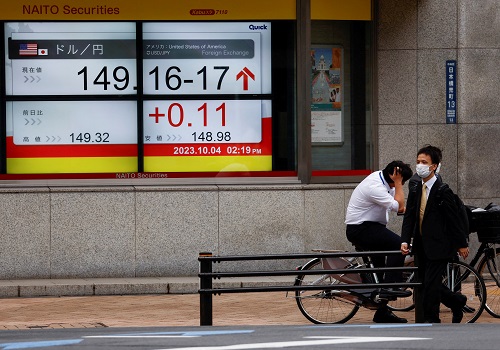World stocks poised for consecutive weekly gains for first time in 2022

Follow us Now on Telegram ! Get daily 10 - 12 important updates on Business, Finance and Investment. Join our Telegram Channel
LONDON - World stocks paused for breath on Friday but are set for a second consecutive week of gains for the first time in 2022 though sentiment was broadly cautious as markets evaluated the economic risks from the Federal Reserve's policy tightening and Russia’s war in Ukraine.
U.S. stock futures were marginally higher in the last full week of the quarter while European stocks are set for a minor weekly loss led by financials and energy stocks after two weeks of gains. [.EU]
Technology shares in Hong Kong led losers and weighed on the broader market after U.S. regulators said recent media speculation about an imminent deal that would stop hundreds of Chinese companies from being kicked off American stock exchanges was "premature".
Even though global flash PMI data for March this week showed the world economy was broadly resilient, investors have turned increasingly bearish on the economic outlook. Barclays, for example, cut its 2022 world economic growth forecast this week to 3.3% while traders have ramped up short bets.
German business morale deteriorated in March due to worsening supply chain issues resulting from high petrol prices as well as driver shortages, but the country is not facing a recession in the first quarter due to the Ukraine war, the Ifo institute said on Friday.
Global bond markets were still in the grips of one of their worst selloffs in recent memory, while gauges of market volatility threw mixed signals. Nickel, the face of market volatility, climbed 9% on Friday after hitting the 15% daily trading limit in the previous two sessions.
BofA strategists said in a note that U.S. Treasuries are poised for their biggest annual loss since 1949 even as a global pile of negative-yielding government debt have fallen to less than $2 trillion from more than $18 trillion at the height of the pandemic.
"I think the passing of the quarter end and fiscal year end in Japan next week will give a cleaner read on the resilience of risk assets and currencies to the bear market in bonds and prospect of accelerated Fed tightening in May," said Kenneth Bronx, an FX strategist at Societe Generale in London.
Benchmark U.S. 10-year Treasury yields which have led the broader bond market selloff held at 2.34% on Friday after hitting a near three-year peak of above $2.41% this week. Yields have risen 75 bps in the past two weeks as traders have scrambled to revise their rate hike expectations.
Rising bond yields have benefited the U.S. dollar with the greenback rising to a late 2015 high versus the Japanese yen of 122 yen before trimming some gains.
NOT SUFFICIENT
The broader dollar index took a breather on Friday but was on track for a small weekly gain. The euro currency was marginally higher at $1.108.
"EUR-USD remains quite stuck at around 1.10, with better-than-expected PM surveys across the eurozone for March not sufficient to induce buying interest,” UniCredit analysts said.
Markets are expecting a total rate increase of as much as 190 basis points for the remainder of the year after a 25 bps U.S. rate hike last week. Investors are assigning a 88% probability of a 50 bps rate hike in March.
Chicago Fed President Charles Evans was the latest U.S. policymaker to sound more hawkish, saying on Thursday the Fed needs to raise interest rates "in a timely fashion" this year and in 2023 to curb high inflation before it is embedded in U.S. psychology and becomes even harder to get rid of.
Demand for safe-haven assets including gold and the Swiss franc remained resilient as the conflict in Ukraine showed no signs of slowing. Ukrainian troops are recapturing towns east of the capital Kyiv and Russian forces who had been trying to seize the city are falling back on their overextended supply lines.
Spot gold remained elevated at $1,959 an ounce, steady on the day. [GOLD/]
Oil continued to slide a little on Friday, as the United States and allies considered releasing more oil from storage to cool markets. Brent crude fell 1.3% to $117.78 per barrel and U.S. crude down 1.6% to $110 a barrel, but prices were still very high by historic standards. [O/R]
























